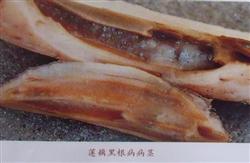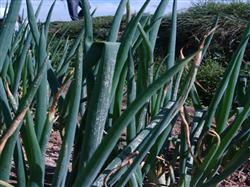How to harvest lotus root?

How to harvest lotus root? Please guide the early harvest of lotus root to affect the yield and the decline of quality too late. therefore, the harvest time should be determined according to the early or late of seedling and the need of eating. ① fragrant lotus root. The newly formed lotus root is called flower-fragrant lotus root, also known as tender lotus root, this kind of lotus root has a very low starch content and has the characteristics of fresh, sweet and crisp flavor. The foot layer leaves of the flower-scented lotus root are yellowish green, the middle leaves are dark green, and the upper leaves have been stereotyped. It can be harvested when there are no new leaves in the whole, and it is better to harvest in the first ten days of September, but the harvest at this time affects the yield and should only be harvested less. ② mid-autumn lotus root. The mid-autumn lotus root can be harvested before and after the Mid-Autumn Festival, when the leaves of the foot layer of the whole field wither, the leaves of the middle layer are yellow and the leaves of the upper layer are yellowish green. The main purpose of harvesting mid-autumn lotus root is to supply people's demand for Mid-Autumn Festival and National Day. ③ red rust lotus root and white rust lotus root. Red rust lotus root is generally harvested in mid-October, because the surface of the lotus root has rust color and gets its name. At this time, there is more starch in the lotus root, which can be used as cooked food or processed into lotus root powder. At the end of October, the lotus root turns red to white, which is called white rust lotus root. At this time, the lotus root is rich in starch, suitable for processing and eating, and can be stored until the beginning of the spring of the following year. Let the water dry two weeks before the lotus root is harvested, and look for the terminating leaves when harvesting. This leaf grows in the middle of the lotus root node, the leaf spreading angle is small, most of them are semi-unfolded, the petiole is slender, the leaf is tilted forward, and the leaf withered later. After Frosts Descent to the Beginning of Winter, the leaf has withered completely, but it has better elasticity than other petioles. After finding the terminating petiole, the depth of lotus root can be estimated according to the distance between the terminating leaf and the rear pillar leaf. When harvesting, use the foot shovel to step down the petiole to the bottom of the mud, first harvest the upper layer of lotus root, and then harvest the lower layer of lotus root. The operation method is to remove the soil under the lotus root body and grasp the back handle of the lotus root with the right hand to prevent it from breaking, so that the mud can be poured into the pores and affect the edible effect. The lotus root harvested should not be busy washing, and then washed before sale, which can reduce discoloration and improve the fresh quality of lotus root. If you want to keep the seed, you should choose the well-growing clay lotus root pond, harvest the lotus root nearly 2 meters away around the lotus root pond, leave 30 centimeters every 2 meters in the middle of the field, or harvest the first two sections of the lotus root, leaving the last section as the seed lotus root next year. Because the lotus root has to spend the winter in the field, it is necessary to keep a certain amount of water in the field and not dry, so as to prevent the soil from cracking and damaging the lotus root. If you can not always maintain shallow water, it is appropriate to cover with straw to protect against cold. Before planting lotus root next year, dig out the lotus root, dig it, choose it, and plant it. Click to get more lotus root planting techniques click to get more vegetable planting techniques
- Prev

What diseases should be controlled in planting lotus root?
What diseases should be controlled in planting lotus root? Please introduce that lotus root is a high-yield and high-efficiency aquatic cash crop and a vegetable variety eaten by the people. It is widely cultivated in various places. With the adjustment of local industrial structure, its cultivated area is constantly expanding. In recent years, lotus root diseases are becoming more and more serious.
- Next

How to prevent and cure Botrytis cinerea of scallions?
How to prevent and cure Botrytis cinerea of scallions? Please introduce green onion gray mold, also known as white spot disease, is the main disease of green onion. Mainly harmful leaves, white oval or nearly round spots on the leaves at the initial stage, mostly developed from the leaf tip down, gradually connected into pieces, so that the leaf tip curled and died. When the humidity is high, the withered leaves appear big.
Related
- Where is it suitable to grow horseradish in China? it is expected to see the middle altitude horseradish in Alishan.
- How to prevent tomato virus disease reasonably? (Control methods included)
- Many people like to plant towel gourd on the balcony. What are the main points of this method and management?
- What crops can chili peppers be mixed with?
- Fertilization techniques and matters needing attention in Tomato
- What are the grafting techniques for peach seedlings in spring?
- Harm and control methods of root swelling disease of Chinese cabbage
- What are the pests of sweet potatoes? How to prevent and cure it?
- Symptoms, causes and Control methods of navel Rot in Tomato
- The cause of "Cucumber rotten bibcock" in Farmers' planting Cucumber and its Control Plan

